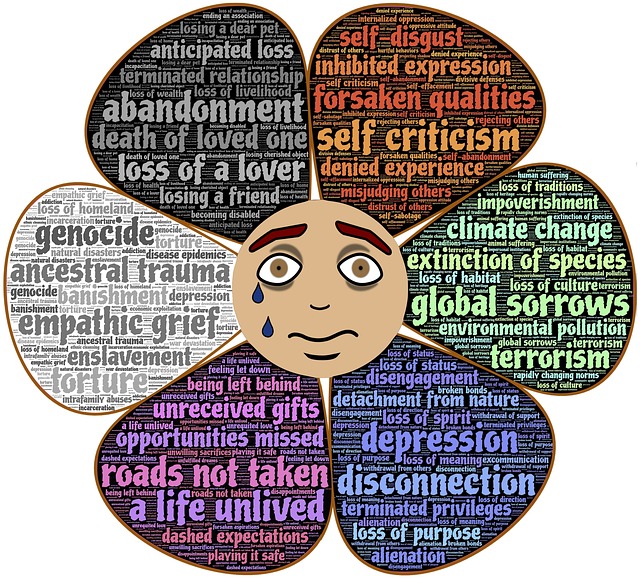There are times when we have to shed something of ourself that we hold dear – our beliefs, our self-stories, or an aspect of our identity. Sharon Salzberg, in her new book Real Life, describes this shedding process as “the movement from constraint, narrowness and limitation to openness, connection, and freedom”. Shedding was the topic introduced by Jennifer Harris, the facilitator of our recent Creative Meetup.
Jennifer introduced the theme of shedding by sharing Harryette Mullen’s poem, Shedding Skin. Harryette likens the process of shedding to stripping off “old scarred skin” and “sloughing off deadscales”. In her view, it involves being open to vulnerability by “shedding toughness, peeling layers down”. Jennifer also introduced the words of a song by Florence and the Machine in which she sings, “And in the Spring I shed my skin”. These words from Rabbit heart (Raise Me Up) are interpreted to mean “shed timidity and become courageous”.
Shedding old beliefs
Neale Donald Walsch, in an interview with Kute Blackson for the Soul Talk Podcast, spoke at length about the challenge of giving up old beliefs. He had been told by his father not to talk to black people because “they were trash”. He sustained this belief for some time because he thought it would be disrespectful to challenge the authority of his parent. However, his own life experience as a radio host caused considerable cognitive dissonance for him to the point where he had to shed his old belief about black people. Neale found that when interviewing for his radio show the audience was predominantly black and he found that they were, in fact, “brilliant and incredible…nice human beings” and ended up having lunch with them and seeking a close friendship with one black person in particular. He had to shed his old, wrong beliefs about black people to overcome his cognitive dissonance and sustain his relationships with members of his audience.
Neale also had to shed his beliefs about women (again taught by his father) – “women should take care of the house and kids and not being paid equally, not being as bright as men”. This belief undermined his relationships with women and resulted in multiple failed marriages. His beliefs about women were constraining, limiting and narrow. It took regular relationship crises for him to challenge his beliefs and to learn to behave differently in his relationships with women. So, disconfirming evidence and/or life crises can lead to shedding wrong or outdated beliefs.
However, some people continue to maintain firmly held beliefs despite disconfirming or conflicting evidence and will defend them with overt or covert aggression. I learnt this at my own expense when I was a young manager in the 1980’s. I participated in a national conference for State Managers of Training held by the Australian Taxation Office in Canberra. At one stage in the process, an Assistant Commissioner of Taxation (2IC) joined us to provide moral support for the Central Office Training Team (who were “under fire” from the State representatives for trying to centralise all training). During the Assistant Commissioner’s presentation, I politely challenged his statement that “The Taxation Office is at the forefront of technology in Australia.” I explained that at a State level the opposite was true – in fact we were years behind the private sector at the time. I was publicly abused for my challenge to his firmly held belief (which, while no longer true, was true in the 1960s and early 1970s). His abuse was so memorable that I was stopped in the street 10 years later by a participant from another State who recalled the “abuse”.
I also learnt again painfully that people in authority can protect their beliefs by covert aggression as well as overt aggression When I was an academic, I was introducing action learning into my university and using it as a basis for my PhD research. My Dean opposed my endeavours by trying to prevent my appointment as a tenured academic as well as my overseas travel for a World Congress on action learning in Colombia (I was a member of the international organising committee). He eventually prevented my promotion to a Senior Lecturer – in the feedback afterwards, telling me that “you had the best application [because of my experience and rating as a teacher], but you are using a non-mainstream approach in your PhD research”. Action learning promotes the view that we are all “personal scientists” building expertise through life experiences and reflection on our experiences – a position that conflicted with my Dean’s belief in the expert role of academics and the role of Universities as being the “repositories of all learning”. In consequence, he used covert aggression to try to prevent my academic advancement.
Shedding self-stories
Negative self-stories can develop through the influence of our parents, teachers, peers or colleagues. These self-stories can shape our beliefs about ourself and our worth and influence our behaviours in the face of difficulties and life’s challenges. Negative self-stories can arise through traumatic experiences and are often at a sub-conscious level. Self-beliefs such as “I’m not good enough” can arise from behavioural messages of parents (e.g. through neglect, constant criticism, or extended absences). The “need to please disease” as a hidden motivator can also arise from a belief that “I’m not lovable” and “I have to be nice to be liked and not rejected”.
It is difficult to overcome adverse childhood experiences that are often behind negative self-beliefs. Tara Brach suggests that mindfulness practices (such as mantra meditation, writing and reflective conversations) can help us to loosen false beliefs about ourselves. She offers a process for investigating and challenging false beliefs about ourself. She argues that as we grow in mindfulness we can develop the self-awareness necessary to enable us to identify our habituated behaviour and to name and challenge our false beliefs. In the process, we can loosen the hold of our false self-beliefs, restore our energy and engage more positively and creatively in everyday life.
Surrendering to the process of shedding
Participants in our recent Creative Meetup discussed the difficulty of letting go of old beliefs. They suggested that the process takes time, patience and self-compassion. They discussed the movement from the pain of shedding to the realisation of potential. They suggested that the process of taking on new beliefs is uncomfortable, moving from the known to the unknown.
The rewards of surrendering to the process of shedding beliefs were valued and highlighted. They talked about “a new way of seeing”, removal of blinkers, experiencing release and empowerment, and accessing a “deeper self” and a “a new way of being”. The challenge of surrender is real, but the rewards are great.
Tara Brach, with Jack Kornfield and colleagues, offers an online course, Power of Awareness, that is designed to help us “break free from negative thoughts” to realise balance, peace and joy. They offer a mindful approach to achieving a quiet mind by bringing awareness and self-compassion to our “inner dialogue”. I have undertaken this course and found it highly beneficial.
Reflection
Lulu & Mischka in their mantra meditation, Metamorphosis, capture the essence of surrendering to the process of shedding. They encourage us to “keep letting go”, “trust in the process”, relax into the present and “stop resisting”. If we can do this through mindfulness practices such as reflection and mantra meditations we can achieve healing and a metamorphosis that will enable us to spread our wings and fly higher. This exhortation resonates with Sharon Salzberg’s encouragement to move from constraint to freedom, from narrowness to connection. from limitation to openness. I have expressed these insights in the following poem:
Surrender to Shedding
There comes a time in our life when we have to shed old beliefs.
Slough off our limiting self-beliefs,
Remove constraints on our thinking,
Break down the barriers of our defence mechanisms,
Let go and stop resisting,
Surrender to the process of casting aside what no longer works for us.
The shedding process is painful.
Discomfort with the new,
Feeling lost,
Leaving behind the known,
Moving to uncertainty,
Open to anxiety.
The rewards of shedding are great.
Releasing from constraints and limitations,
Achieving a new sense of freedom,
Moving from pain to possibility,
Discovering a new creative self,
Flowing like a river, rediscovering “Flow”.
_____________________________
Image by Jonathan from Pixabay
By Ron Passfield – Copyright (Creative Commons license, Attribution–Non Commercial–No Derivatives)
Disclosure: If you purchase a product through this site, I may earn a commission which will help to pay for the site, the associated Meetup group and the resources to support the blog.









